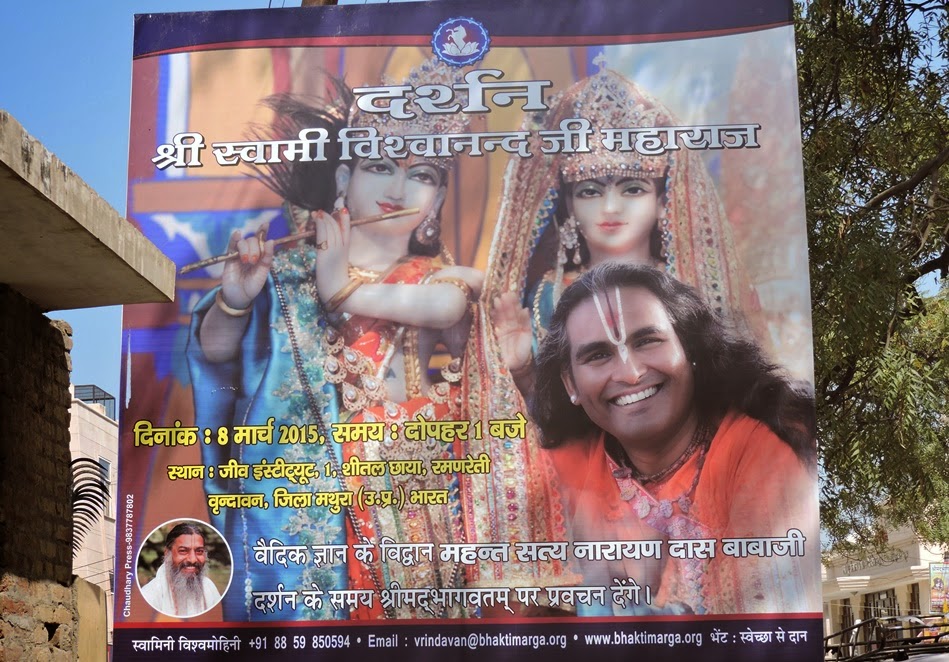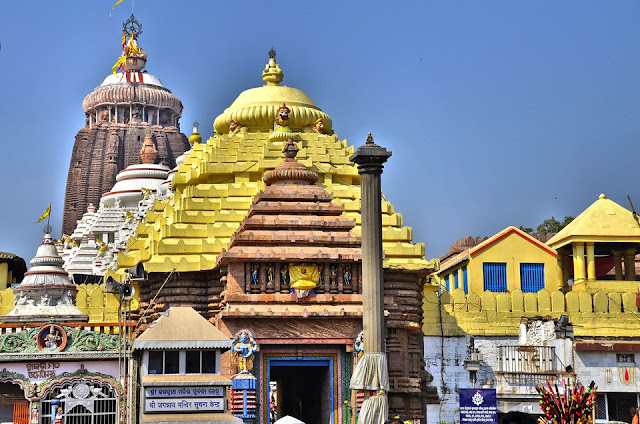Madana-maha-bhava
In union, this mādana-bhāva might take extraordinary forms, whose manifold manifestations are particularly visible in the nitya-līlā. The workings of mādana are incomprehensible to Cupid himself, and it would be impossible for even the Muni to describe them. (UN 14.225-226)Madanasyeva. Vishwanath first glosses mādanasyeva, which seems unlikely to me. A possibility is madanasyaiva, which is what Jiva seems to be interpreting, even while reading iva. If we accept the madanasyeva reading, then what appears to be said is that Prema and Kama are different, but that both share a certain ineffable quailty.
Muni is glossed as both Bharata and Shukadeva (Vishwanath says either, Jiva only Shuka, Vishnudas goes for Bharata). I would think Bharata was intended, as he is considered the ultimate authority on the sthāyi-bhāvas. But the nitya-līlā is not described by Shukadeva, either, so either appear to be a reasonable possibility.
Vishwanath seems to have an alternate reading here, but does not gloss, so no way of ascertaining what it was. Perhaps madanasyaiva, since he here glosses madana as Krishna himself.
The passage is significant for Jiva Goswami as it forms an important pillar of his arguments in relation to the svakiya-parakiya issue, in particular where he is arguing that in the nitya-lila, as stated in this verse, the madana-bhava is manifested in variety in union (yoge), with the special emphasis given by the word eva, which here means "alone." Only in union, in other words, can this highest state of madana-bhava be experienced in all its varieties.
That passage is of some interest, so I will continue, as it is relevant to my study of the Gopala-campu.
GC ii.37v79 is fully quoted under BRS iii.4.76. GC 1.33v5 is quoted in Jīva’s comments on UN 15.147. Six other verses from GC are cited without any mention of their source at the end of Jīva’s long commentary on samṛddhimān sambhogaḥ in which he argues for Kṛṣṇa’s return to Vraja and his marriage to the gopīs (UNc 15.208). These six verses are divided into one poetic diapason of eight verses in long metres ending a lengthy argument that also includes three others of the same type not traceable to any other work. The sixth verses follows another, shorter subsequent argument. The GC verses cited are i.15v63, ii.35v88, 36v15, 35v32, 37v129. 37v152. In view of the peculiar characteristics of these citations, it seems reasonable to think that they were composed here first and later included in GC.



Comments